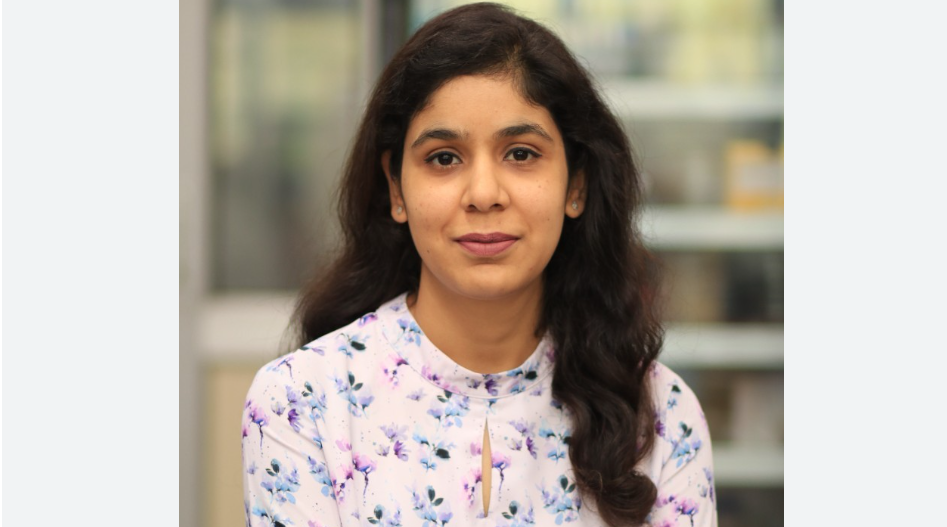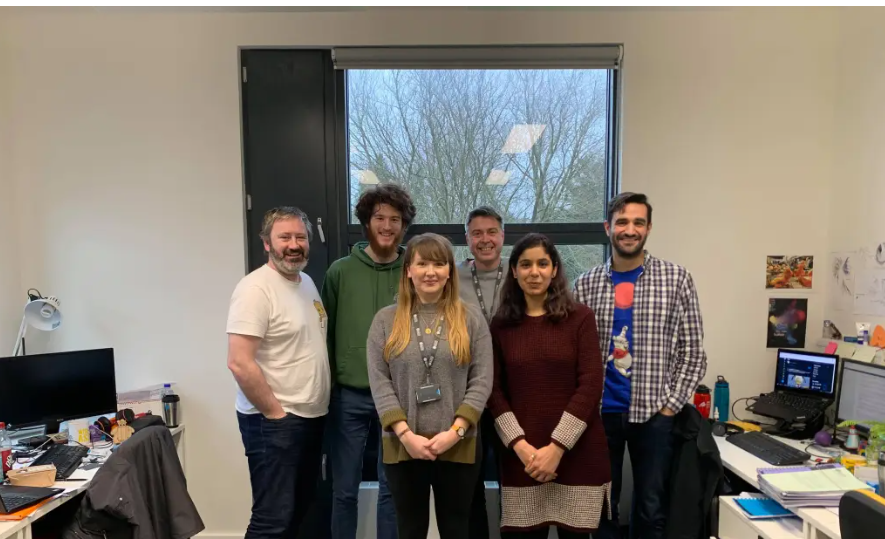Jaspreet Mahindroo visited Milner Centre of Evolution – University of Bath as part of her PhD studies at the Postgraduate Institute of Medical Education & Research (PGIMER), Chandigarh in India. Jaspreet was able to characterize her Campylobacter genomes and investigate potential sources of infection in India at the INEOS Oxford Institute
From left to right: Ben, Grant, Jess, Sam, Jaspreet & Evangelos as shared by The Shephard Lab
The use of antibiotics in veterinary medicine is due to the need to treat and prevent bacterial infections in animals. Bacterial infections can cause significant harm to animals and can result in death in some cases. Antibiotics are effective in treating and preventing infections, but their overuse can contribute to the development of antimicrobial resistance (AMR) in animals.
In 2017, India published a National Action Plan (NAP) with the goal of reducing AMR. The objectives of the plan include raising awareness, enhancing infection prevention and control, enhancing surveillance, encouraging investments, and fostering cooperative activities. Since NAP was published, India has been sending pertinent data to the Global Antibiotic Resistance Surveillance System (GLASS).
GLASS is a global system that aims to support national and regional surveillance of AMR. It also aims to generate reliable and comparable data that can be used to inform interventions to combat AMR. Despite the efforts so far, India still has one of the highest use of antibiotics worldwide.
In a way to reduce the menace of AMR in Northern India, Jaspreet Mahindroo, an AMR ambassador and 2022 PAR grantee launched a project in Haryana and Punjab, which are intensive poultry farming regions in North India in September 2022. “I became concerned about the high burden of AMR in India and that made me apply for PAR funding to educate farmers about the need to use antibiotics appropriately in commercial poultry.” – Jaspreet Mahindroo.

According to Jaspreet, she wanted to know the views of local farmers on antibiotics and antimicrobial resistance. One of her objectives is to understand farm demographics, agricultural practices, antibiotic use, and how people view antibiotics and AMR. She, therefore, used the PAR grant to secure ethical clearance for her study, hire and train technical staff, and create the questionnaire design for her study.
Because of the multidisciplinary scope of her study, she consulted experts in the fields of social science, public health, veterinary medicine, and poultry farming before sampling her study population. “The first sampling rounds began in the first week of December and I have now contacted thirty-one poultry producers in the northern Indian states of Haryana and Punjab. The study will involve fifteen poultry farmers from farms with moderate to high flock sizes, including layers and broilers.” – Jaspreet Mahindroo
Fifteen poultry farmers from layers and broilers of moderate to large-size farms participated in her study. Eleven poultry farmers have refused to participate. She further stated that the assessment of behavioural change and microbiological testing will be done after three months of the first sampling. She will therefore be able to calculate percentages of decreased use of antibiotics after her first interaction with local farmers by April 2023.
According to Jaspreet, there is high resistance to fluoroquinolones, tetracyclines, and aminoglycosides and comparatively low resistance to cephalosporins and carbapenems in the study location as farmers complain about the low effectiveness of these antibiotics in recent years. Fourteen farmers who were interviewed admitted to using antibiotics on their farms at some stage throughout the production cycle.
While antibiotic use varied among participants, most used antibiotics on their farms for preventive or therapeutic purposes. In addition, it was discovered that many of the farmers were unaware that human illnesses were treated with the same antibiotics and gained insight during the interactions.
Only one of the farmers in the study has always used organic, free-range farming without the use of antibiotics and superior farm hygiene and biosecurity procedures over the past 5 years. In addition, Jaspreet will have more meetings with farmers in the region so that she can advocate for non-antibiotic farming practices.
Jaspreet hopes to develop AMR intervention strategies based on the findings of the research. She hopes to analyse her study and provide recommendations on further intervention towards the prevention of AMR in her region. She also expressed her gratitude for having an excellent institute like the Postgraduate Institute of Medical Education and Research (PGIMER), Chandigarh to conduct her studies. “I am so grateful for the opportunity to conduct my research study at PGIMER and expand my knowledge”, she said
Jaspreet has in the past contributed to scientific publications. Particularly noteworthy is the discovery of Salmonella enterica serovar Kentucky ST198, which is the most frequent cause of non-typhoidal Salmonella infections in people. The bacteria is also endemic to animals used for food production.
She said, “In my previous study, the clone of the bacteria was previously reported from travellers coming back from countries in Asia and the Middle East. It was multidrug resistant. The study highlights the value of genomics in tracking these illnesses and the necessity of surveillance in both humans and animals.”
A key outcome of her current PAR-funded project is to develop guidelines and recommendations on how to promote antibiotic stewardship among farmers and veterinarians practising poultry farming. With further collaboration expected on her project, Jaspreet hopes to get a PhD student to take the research component of the study further on a larger scale with a large dataset.
Her current project in North India has not yet received attention from the appropriate policymakers because the project is still in its early stages. However, collaborations are already underway. She is currently having discussions with researchers from in the United Kingdom. She is planning to collaborate on genomic analyses of the E. coli samples that will be obtained during her PAR-funded study.
“The main goal of this collaboration will be to identify the genetic factors underlying AMR and pathogenicity in these isolates and determine how closely related they are to the E. coli isolates that are responsible for human disease. This discussion is currently at its beginning stages”, she said.
Jaspreet like many other early career PAR ambassadors is promoting antimicrobial stewardship in her corner with her capacity through community mapping, community engagement, research and then advocacy.

